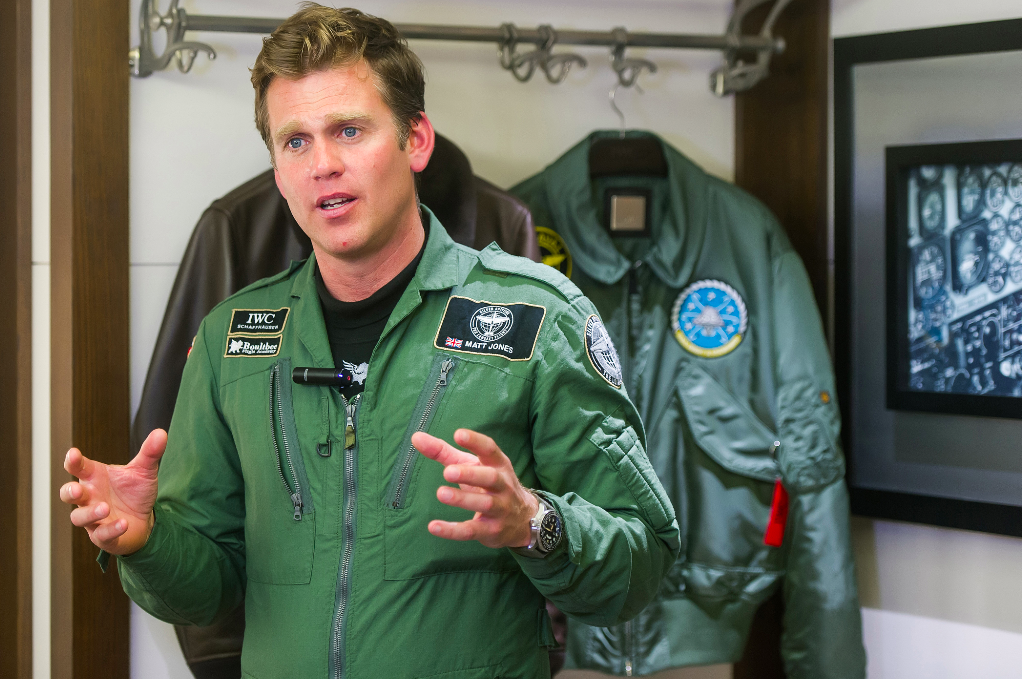Halfway through a ground-breaking circumnavigation of the globe in a World War II-era Spitfire, British pilot Matt Jones is on cloud nine
It’s not every day you see a grown man cry, not least an adventurer on a 90-stop round-the-world odyssey in a restored 1943 propeller-driven warplane. But that’s what flying a vintage aircraft can do to some, I discover, thanks to the nostalgia such a journey conjures. That’s the reaction I witnessed during an inspiring conversation with British pilot Matt Jones before he set out on the next leg of an epic journey aboard a World War II-era Spitfire with fellow pilot Steve Boultbee Brooks.
An Epic Adventure
Jones, an investment banker in a former life, and Brooks, the principal of a Spitfire training school they established called the Boultbee Flight Academy, are now two months and halfway into their expedition, named Silver Spitfire—The Longest Flight, having set out from Chichester, England, at the beginning of August. They’ve already swept across the wilderness of Greenland, the vast landscapes of Canada, the bustle of such cities as New York and Seattle, and the icy expanses of Alaska—and it’s clear Jones has been revelling in every moment.
“When the engine starts, the Silver Spitfire comes alive—the roar, the throttle, the vibrations,” he says with a quiver in his voice. “I’ve flown state-of-the-art aircraft like the Typhoon, which is equipped with massive, powerful engines that allow you to go incredibly fast but all you hear inside is air conditioning; you’re pretty much cut off from the entire experience and, unless you look at the controls, you have no idea how fast you’re going. But with the Spitfire you’re part of the aircraft; it speaks to you through the ringing in your ears, the numbing vibrations on your bum, feet and hands. And the stunning views below will just blow your mind away. It’s fantastic.”
See also: The Sky's The Limit With IWC's New Spitfire Collection

Reviving A Relic
The goal of circumnavigating the world in a Spitfire is as ambitious as it is unprecedented. Before this expedition, the legendary British warplane, originally called a Supermarine Spitfire Mk IX, had never embarked on such a long journey, which will see it travel more than 43,000 kilometres and touch down in 30 countries. The Herculean task of restoring the Silver Spitfire for the adventure took two years and involved 15 specialised engineers, with thousands of parts, many no longer in production, needing to be painstakingly refurbished or recreated and tested.
The project was a natural to win the backing of IWC Schaffhausen, given its long history and strong ties with aviation watches. But Jones also had a personal role in establishing the collaboration, which goes back some years. “I got in touch with IWC because I felt there was a genuine connection there; they even had a Spitfire range,” he explains. “It was Christoph [Grainger-Herr] who I ended up meeting. We had a few meetings and we were both genuinely interested in doing something together but couldn’t quite figure out then how the partnership would work. We sort of lost touch.
“Then many years later I got a call and was told that the CEO of IWC was at our facility. So Chris walks in and I’m like, ‘Hey, Chris! The CEO is coming in a minute.’ Then he said, ‘I am the CEO.’ Having already seen the passion in the man, I was thrilled that we were doing this with him. And within two minutes after I told him my idea of this journey, he said, ‘Where do we put our logo?’ And here we are now, actually doing it.”
While flying a propeller-driven warplane around the world sounds like something out of an adventure book, Jones says the expedition is so much more than that; it is about connecting people and being reminded of the beauty of the world.
“While the Spitfire holds a lot of significance in the UK because it helped win the war, it also fought in other countries around the world during that time,” Jones says. “What we want to do through these 90 stops across the world is reunite the Spitfire with veterans, or people who would have seen it fight, or who supported it potentially in their military, and show the kids of their kids who would’ve heard stories.
“The point is to really inspire people, through history, through the aircraft, about what a beautiful world we live in, and to see that world over the wing of the most beautiful plane ever built. We want to remind people just how important adventure is for the human spirit,” he says, pausing as emotion overcomes him.
See also: 5 Modern Watches With Historical Roots
